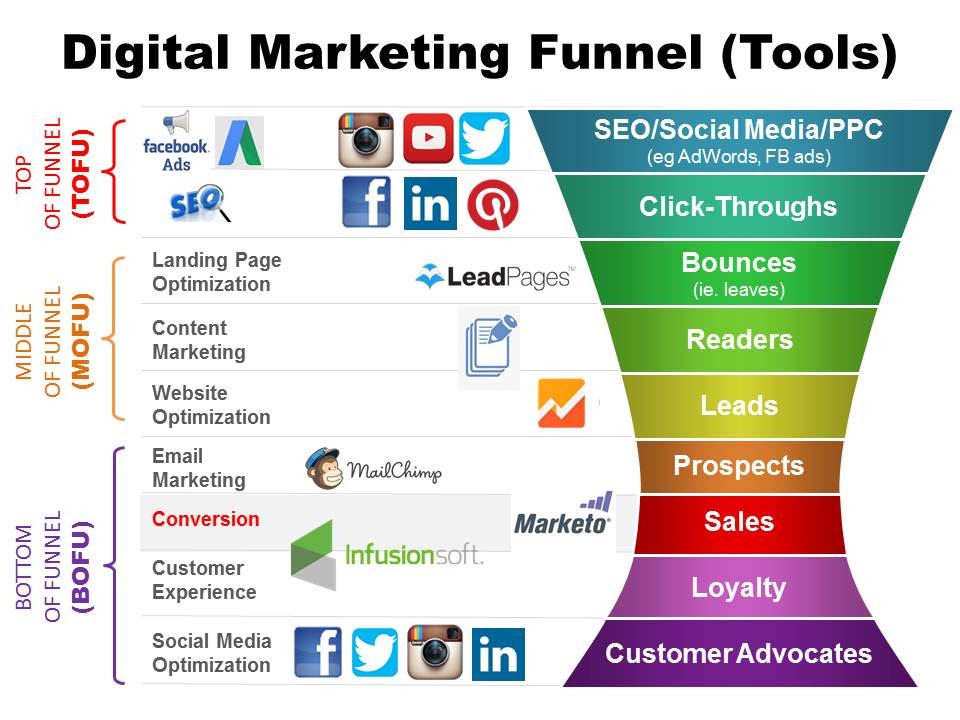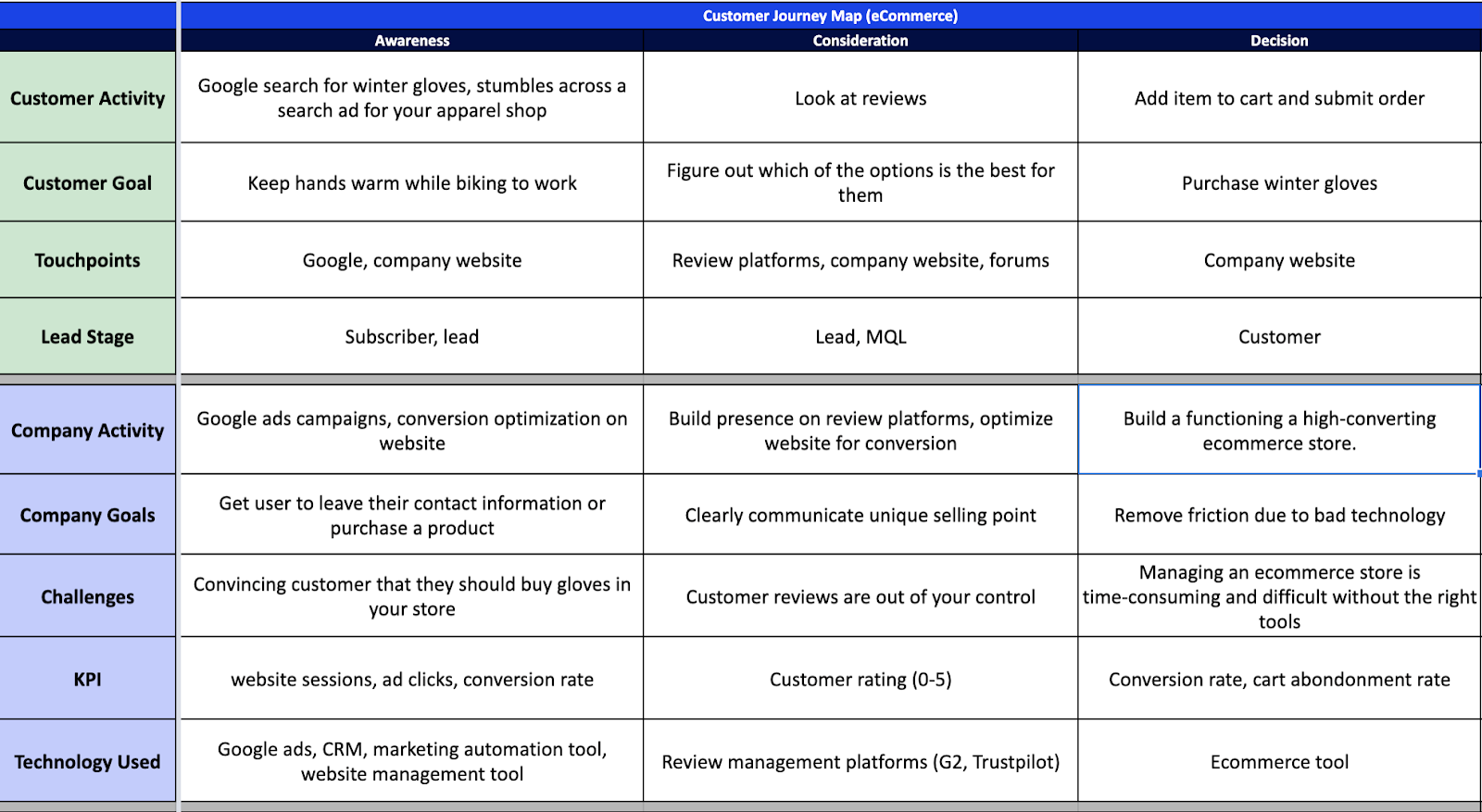Michael Halyk | 18/02/2021
Your sales funnel needs a customer journey map
Human beings are very good at simplifying complex concepts. It’s our way of processing the amount of information being thrown at us. In the best-case scenario, this technique is sufficient at allowing us to build and collaborate. In the worst-case scenario, it is an impediment.
We often reason by analogy, meaning that we wrap our heads around difficult or abstract concepts by comparing them to real-world objects or processes. In the marketing and sales world, we have traditionally conceptualized the process of becoming a customer as “the sales funnel”. But by itself, the sales funnel is useless.
This post will be a high-level look at the philosophy of marketing and sales processes. If you’re looking for technical details about the inner workings of sales funnels and how to build them, there are many resources available, some of which I have used as links in this article.
What is a sales funnel?
The term “sales funnel” was meant to help companies visualize the marketing and sales process by comparing it to a physical funnel, where something (data) goes in the top and is filtered by ever-narrowing parameters until it reaches the end.
Practically, the sales funnel is meant to be a model to represent the process of turning inbound marketing leads into sales prospects, and then into customers. It is a high-level conceptualization of many different processes:
- Inbound lead generation
- Lead nurturing
- Lifecycle identification
- Handover of leads to the sales department
These functions are not independent - they rely on a general architecture usually spread across many different software tools and departments.
CoolerInsights has made a good visualization of how complex a sales funnel can get, and some of the most popular tools at play:

The problem with sales funnels
It’s clear that the sales funnel primarily focuses on the architecture and functionality of the sales and marketing departments in a company. It outlines what the different lead stages are, what tools are used in each stage, how leads enter the funnel, etc.
The problem is that when used on their own, sales funnels are inward-looking. There is often little consideration for user behavior - how real human beings act and react to your business at its many touchpoints, and the goals at each step of the way.
Your sales process should be adaptable to take into consideration the unique entry touchpoints of people in each of your target verticals. By this I mean, you shouldn’t treat all leads in the same way. Many different people from many different countries with many different job titles in many different industries will discover your brand on many different touchpoints.
Your sales process needs to speak to these people.
Sales funnel, meet the customer journey
If you’ve made it this far, I have no doubt that you’ve heard about the customer journey. Customer journeys are a core model under the discipline of customer experience management. You might think that a customer journey is the same thing as a sales funnel.
It is not. But they are similar.
They are similar in that they are both models to help give commercial teams a macro view of what they are working towards. But the difference between the sales funnel and the customer journey is mostly a matter of perspective.
The sales funnel model is inward-looking. The customer journey is outward-looking. It focuses on customer experience.
Like a sales funnel, a customer journey map is simply a visual representation of a process. This is where it is important to remember that these are simplified models.
Let me show you an example of a customer journey map:

It’s important to remember that customer journey maps are a model to aid in understanding. They do not map out the technological architecture need for fulfilling them.
Take a targeted approach
I mentioned earlier that customer journey maps should address specific target segments. This means that you can (and should) build more than one customer journey map.
Here is a list of ways in which you could segment your customer journey maps:
- By target industry
- By geographical region
- By target persona
- By product offered
- By sales channel
You get the idea.
How to build (or rebuild) your sales funnel
The output of your customer journey maps should provide the foundation for first understanding your customers, and then giving a framework with which to build your sales process.
When building (or rebuilding) your sales and marketing functions, here are some steps that you should take:
1. Identify your target verticals/personas
This is a critical first step. Without knowing who you are trying to sell to, the rest of the sales funnel will be built on a shoddy foundation.
2. Identify touchpoints
How, where, and when can leads and customers come into contact with your brand? Your company website is a good place to start, but you should get as granular as possible.
3. Identify customer jobs-to-be-done
This gets a little theoretical, but identifying customer jobs-to-be-done is important for understanding where and how to position your products and services.
4. Define lead stages
Lead stages are a way to track the performance of your sales function. Every company is free to define these stages as they see fit, but the experts at Hubspot use Subscriber, Lead, MQL, SQL, and Customer, among others. This topic could be its own post, so I will leave it there.
5. Define user flows
What are the possible entry points into your funnel? Create a visual map of where leads can be identified? At what touchpoint? And what is your desired action for each flow?
6. Build your martech stack
Now that you have some of the pieces of your customer journey and sales funnel, and goals, you need to figure out what technology can help you achieve your goals. Ideally, you would be checking this every step of the way. Your sales and marketing stack will need to work well together in terms of passing leads from one system to another, so keep this in mind when evaluating your tools.
Takeaways
Your sales funnel needs customer journey maps. They are complementary tools that can go a long way in aligning your sales and marketing teams to work towards building a functioning commercial machine.
This post could not possibly capture the complexity of building a sales funnel, so I urge you to continue your own research, starting with high-level articles like this and then diving into the more technical aspects later.
If you are a software provider to small businesses, you can help your customers sell more with integrated e-commerce tools like Mono E-Commerce+.
About the author
Michael Halyk is the new Acquisition Marketing Specialist at Mono Solutions. He is from Toronto, Canada, and has worked in several software companies across Europe and North America to develop high-performing marketing and sales funnels. With a background in digital marketing and customer experience management, Michael provides a customer-centric perspective on best practices for lead generation, covering relevant topics in SEO, marketing automation, funnel architecture, and more.
About Mono white label website platform
Mono is the leading European white-label website building platform, designed to empower digital agencies, telcos, SaaS providers, online directories, and hosting companies. Our platform enables these businesses to sell, create, and manage websites at scale, providing a robust and reliable solution tailored to meet the unique needs of their SMB clients. With Mono, you can seamlessly build and maintain professional websites at scale, ensuring top-tier performance and customer satisfaction. Try our white label platform for free.